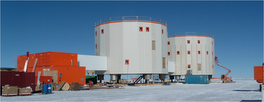Earthquake magnitude or earthquake intensity?
As a seismologist, I am pretty used to dealing with the dual concepts of earthquake magnitude and earthquake intensity. Magnitude quantifies the energy released by the earthquake. Intensity quantifies the ground shaking at a particular location. These concepts are so bread-and-butter to me that I sometimes forget how many people get them confused when listening to reports of earthquakes on the news media.
Nowadays, news media usually get their reporting pretty straight, thanks also to the improved communication coming out of seismological laboratories around the world. Guidelines and explanations are routinely offered now to the media whenever an earthquake occurs. Here is an excerpt from what the USGS puts online after every major earthquake:
Magnitude is the number (for example, 7.1) that represents the energy released in an earthquake; a single number representing magnitude is assigned to each earthquake. Intensity, on the other hand, is a measure of how the ground shook at a particular site. So, while an earthquake has one magnitude and one epicenter, it produces a range of ground shaking levels at sites throughout the region. These different intensities depend on distance from the earthquake, the rock and soil conditions at geographical sites, and variations in the propagation of seismic waves from the earthquake due to complexities in the structure of the Earth's crust.Earthquake intensity is estimated both from instrumental records and from the reports of people who have felt the earthquake. It is often reported in the form of a map, showing intensity as a function of position. You can often report feeling an earthquake by filling in an online form (in the US these forms are provided by the USGS, in France they are provided by the BCSF). Intensity values are given using the following scale, the Modified Mercalli Intensity Scale:
I - People do not feel any earth movement.
II - Felt by persons at rest, on upper floors of tall buildings
III - Felt by people indoors. Hanging objects swing back and forth. Vibration from the earthquake may seem like the passing of light trucks. May not be recognized as an earthquake.
IV - Hanging objects swing. Vibration may seem like the passing of heavy trucks or a jolt, like a heavy ball striking the walls. Parked vehicles may rock noticeably. Windows, dishes, doors may rattle and glasses clink. In the upper range of IV, walls of wood frame buildings may creak.
V - Almost everyone feels movement whether inside or outdoors. Sleeping people are awakened. Liquids in containers are disturbed; some are spilled. Small unstable objects are displaced or overturned. Doors swing, close, or open. Shutters, pictures on the wall move.
VI - Felt by all; some are frightened and take cover. People have difficulty walking due to motion. Objects fall from shelves and dishes, glassware and ceramics may be broken. Pictures fall off walls. Furniture moves or is overturned. Weak plaster and masonry cracked. Damage slight in poorly constructed buildings. Trees, bushes shaken visibly or are heard rustling.
VII - People have difficulty standing. Drivers on the road feel their cars shaking. Furniture may be overturned and broken. Loose bricks fall from buildings and masonry walls and cracks in plaster and masonry may appear. Weak chimneys may break at the roofline. Damage is slight to moderate in well-built structures; considerable in poorly constructed buildings and facilities.
VIII - Drivers have trouble steering. Tall structures such as towers, monuments and chimneys may twist and fall. Wood frame houses that
are not bolted to their foundations may shift and sustain serious damage. Damage is slight to moderate in well-constructed buildings, considerable in poorly constructed buildings. Branches are broken and fall from trees. Changes occur in flow or temperature of springs and wells. Cracks appear in wet ground and on steep slopes.
IX - Masonry structures and poorly constructed buildings suffer serious damage or collapse. Frame structures, if not bolted, shift off foundations. Serious damage to reservoirs. Underground pipes broken. Conspicuous cracks in the ground. In alluvial areas, sand and mud ejected and sand craters are formed.
X - Most masonry and frame structures destroyed along with their foundations. Some well-built wooden structures and bridges are destroyed. Serious damage to dams, dikes, and embankments. Large landslides occur. Water thrown on the banks of canals, rivers and lakes. Sand and mud shift horizontally on beaches and flat land. Rails bent.




No comments:
Post a Comment